The Internet of Things in Medical is rapidly transforming healthcare, integrating connected devices to enhance patient care, streamline operations, and improve real-time data collection. As one of the fastest-growing segments in the IoT market, the Internet of Things in Medical is projected to reach $176 billion by 2026, driven by advancements in remote monitoring, smart medical devices, and automated healthcare workflows.
While remote patient monitoring (RPM), which tracks vital signs like heart rate and temperature, remains the most well-known application, the Internet of Things in Medical extends far beyond wearable health devices. IoT is reshaping how healthcare providers diagnose, treat, and manage patient care using tech like connected inhalers and robotic-assisted surgeries.
This article explores 10 real-world applications of the Internet of Things in Medical, highlighting its impact on healthcare and the key considerations for implementing these technologies securely and effectively.
What is the Internet of Things in Medical?
The Internet of Things in Medical refers to the growing network of connected medical devices and applications that interact with healthcare IT systems via the Internet. These smart, Wi-Fi-enabled devices facilitate seamless machine-to-machine communication, improving the efficiency, accuracy, and accessibility of healthcare services.
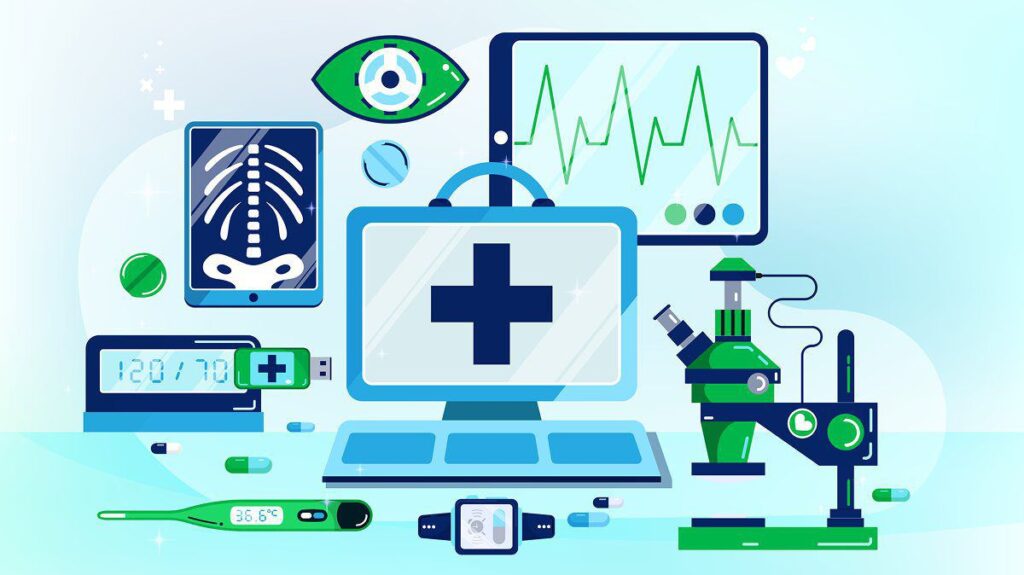
Encompasses a wide range of applications, including:
- Remote Patient Monitoring (RPM): Devices that continuously track vital signs for people with chronic conditions, reducing the need for in-person visits.
- Medication Tracking: Smart pill dispensers and connected pharmacy systems ensure patients follow prescribed treatments.
- Hospital Asset & Patient Tracking: Wearable tags help monitor patient locations in real time, improving hospital workflow and security.
- Wearable Health Devices: Smartwatches, fitness bands, and biosensors collect critical health metrics like heart rate, oxygen, and glucose levels.
- Connected Ambulances: Emergency responders transmit real-time patient data to hospitals, allowing doctors to prepare for incoming cases.
Devices that collect, store, and analyze data on cloud platforms, offer healthcare providers real-time insights into patient health. This technology is also a key enabler of telemedicine, allowing physicians to monitor patients remotely at home, reducing unnecessary hospital visits, and improving access to care, especially for those in rural or underserved areas.
By increasing the speed, accuracy, and volume of data-driven decision-making, the Internet of Things in Medical is reshaping modern healthcare, making it more proactive, personalized, and efficient.
10 Examples of Internet of Things in Medical Applications
1. Remote Patient Monitoring (RPM)
Remote Patient Monitoring (RPM) has transformed how healthcare providers track patient health outside clinical settings. Devices equipped with sensors collect vital signs such as heart rate, blood pressure, oxygen saturation, and temperature, allowing continuous health monitoring without requiring frequent hospital visits. Patients benefit from greater convenience, while doctors gain access to real-time data that improves decision-making.
Once data is collected, it is transmitted to healthcare systems where physicians can review trends, detect anomalies, and adjust treatments. Machine learning algorithms analyze the data and generate alerts when readings fall outside normal ranges. For instance, if a patient’s heart rate drops significantly, an alert notifies healthcare professionals, enabling timely intervention.

Wearable health devices such as smartwatches and biosensors enhance RPM by offering real-time, automated monitoring. This approach reduces hospital readmissions, improves chronic disease management, and provides better access to healthcare for patients in remote locations.
2. Glucose Monitoring
Managing diabetes requires frequent glucose level monitoring, which has traditionally been time-consuming and inconvenient. Periodic manual testing provides only snapshots of a patient’s glucose levels, making it challenging to detect sudden fluctuations.
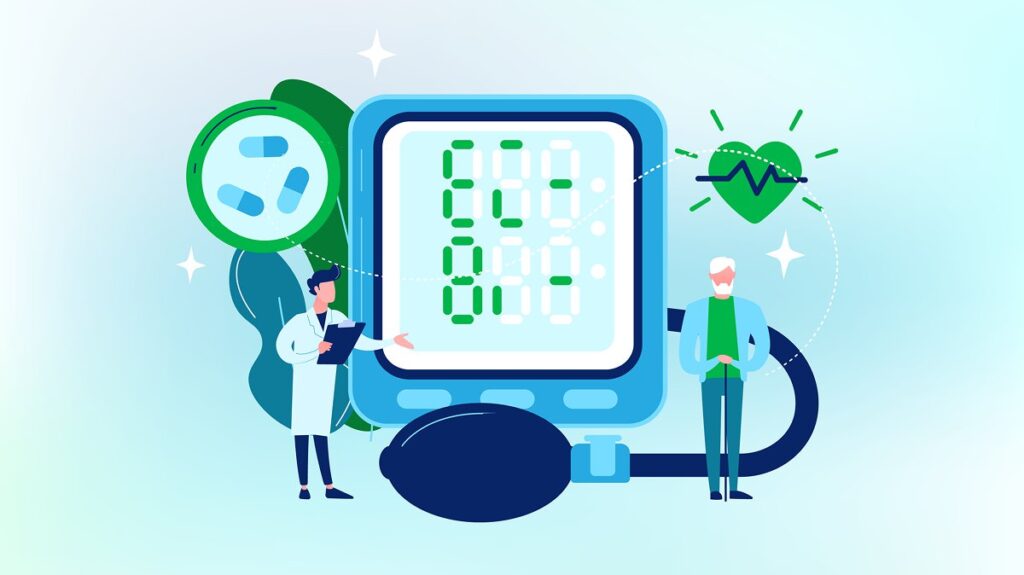
IoT-enabled glucose monitoring devices offer a continuous, real-time alternative. Sensors embedded in wearable patches or subcutaneous implants track blood sugar levels automatically. If glucose readings become dangerously high or low, the system triggers alerts, ensuring timely intervention. Some advanced devices even integrate with insulin pumps to automatically regulate insulin delivery, reducing the risk of complications.
The challenge with glucose monitoring technology is designing compact, energy-efficient, and nonintrusive devices. Advances in miniaturization and wireless power solutions are helping address these concerns, making continuous glucose monitoring more accessible to patients worldwide.
3. Heart Rate Monitoring
Monitoring heart health outside clinical settings for patients with cardiac conditions is challenging. Traditional hospital heart rate checks provide limited insight, while continuous monitoring restricts patient mobility.
Modern IoT-based heart rate monitoring solutions eliminate these limitations. Wearable devices such as smartwatches and chest straps track heart activity continuously, even during sleep. Data is stored in cloud-based electronic health records, allowing healthcare providers to monitor long-term trends.
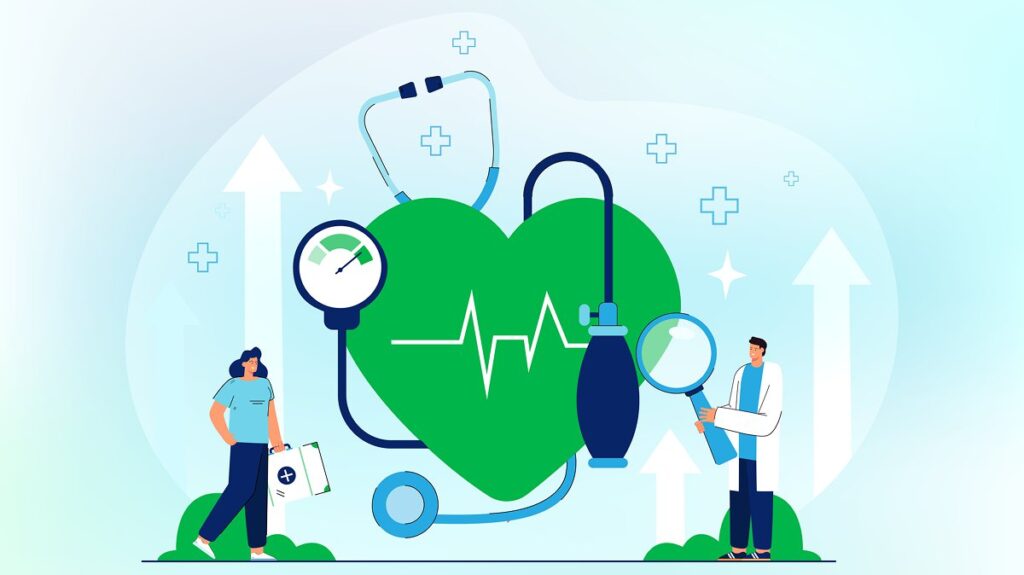
Real-time monitoring provides an extra layer of safety for individuals at risk of cardiac arrhythmias or heart failure. An alert is sent to doctors or emergency contacts when an irregular heartbeat is detected, enabling immediate medical response. These devices not only improve patient outcomes but also reduce hospital admissions by preventing emergencies before they happen.
4. Hand Hygiene Monitoring
Preventing infections in healthcare settings is a constant challenge, particularly in hospitals where patients are vulnerable to pathogens. Proper hand hygiene is one of the most effective ways to prevent the spread of disease, yet ensuring compliance has always been difficult.
IoT-powered hand hygiene monitoring systems help enforce proper handwashing practices. Smart sensors track the frequency of handwashing among medical staff and alert them when they enter patient rooms without sanitizing their hands. Some devices even provide customized sanitization instructions based on the specific risks associated with each patient.
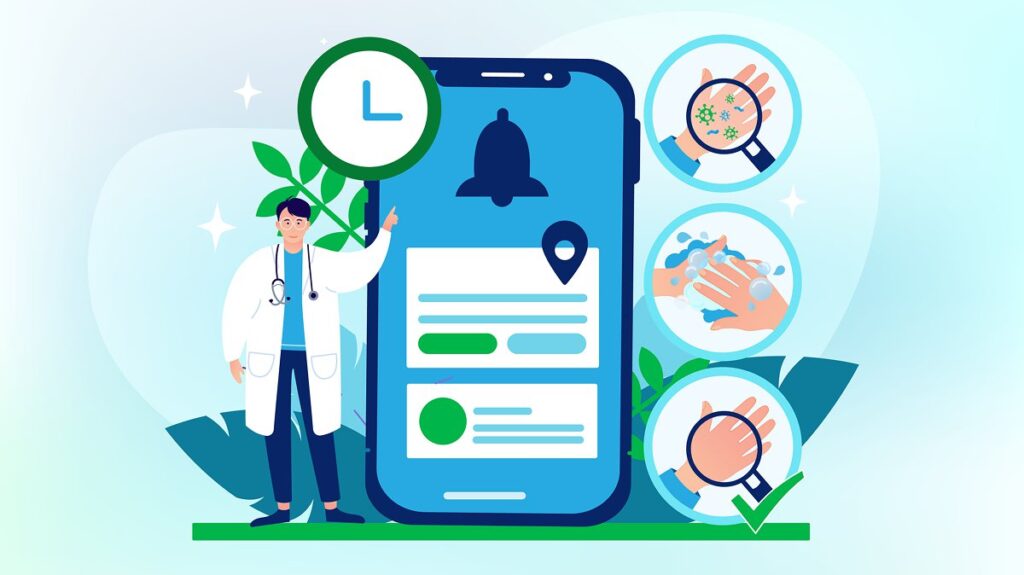
Studies indicate that these systems can reduce hospital-acquired infections by more than 60%, making them a crucial tool in improving patient safety. While the technology cannot physically enforce handwashing, it significantly increases awareness and compliance among healthcare professionals.
5. Depression and Mood Monitoring
Mental health assessment has traditionally relied on self-reported symptoms, making it challenging for doctors to detect sudden mood shifts or underlying conditions. Patients may downplay their emotions, and periodic in-person evaluations fail to capture real-time changes.
IoT-based mood monitoring devices overcome these limitations by inferring a patient’s emotional state using biometric data such as heart rate variability, blood pressure, and sleep patterns. More advanced devices incorporate eye-movement tracking and speech pattern analysis to detect signs of stress, anxiety, or depression.
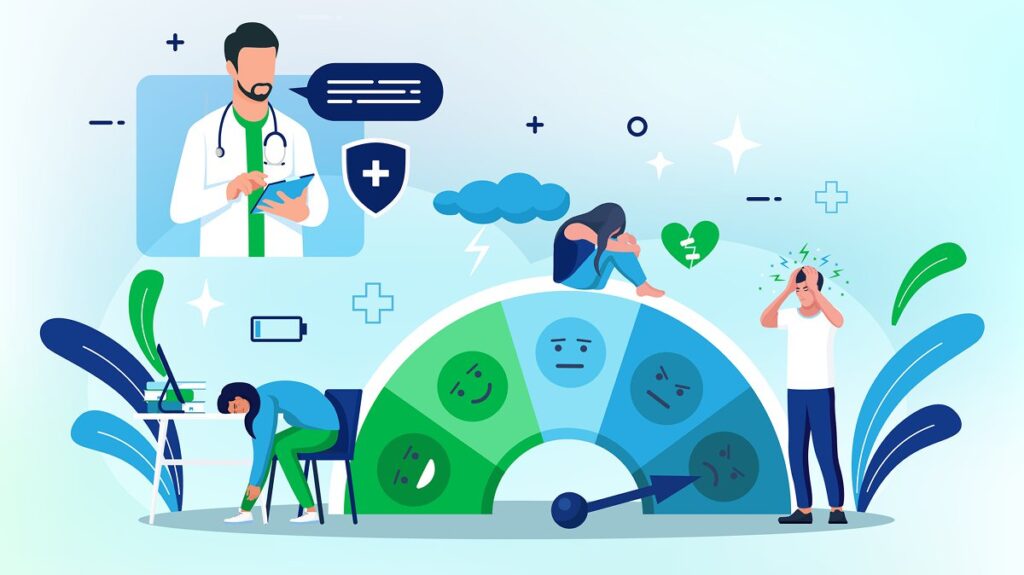
These devices enable earlier intervention and personalized treatment plans by providing objective data. Remote mental health monitoring is especially beneficial for individuals with chronic depression, PTSD, or bipolar disorder, allowing healthcare providers to adjust therapy based on real-time behavioral changes.
6. Parkinson’s Disease Monitoring
Parkinson’s disease presents unique challenges due to its progressive and unpredictable nature. Symptoms such as tremors, rigidity, and slow movement fluctuate throughout the day, making it difficult for doctors to assess the full extent of the condition during routine check-ups.
IoT-powered monitoring solutions track Parkinson’s symptoms continuously, providing uninterrupted data on patient mobility, tremor severity, and responsiveness to medication. Wearable sensors detect changes in movement patterns and gait, allowing neurologists to fine-tune treatment regimens based on real-world data.
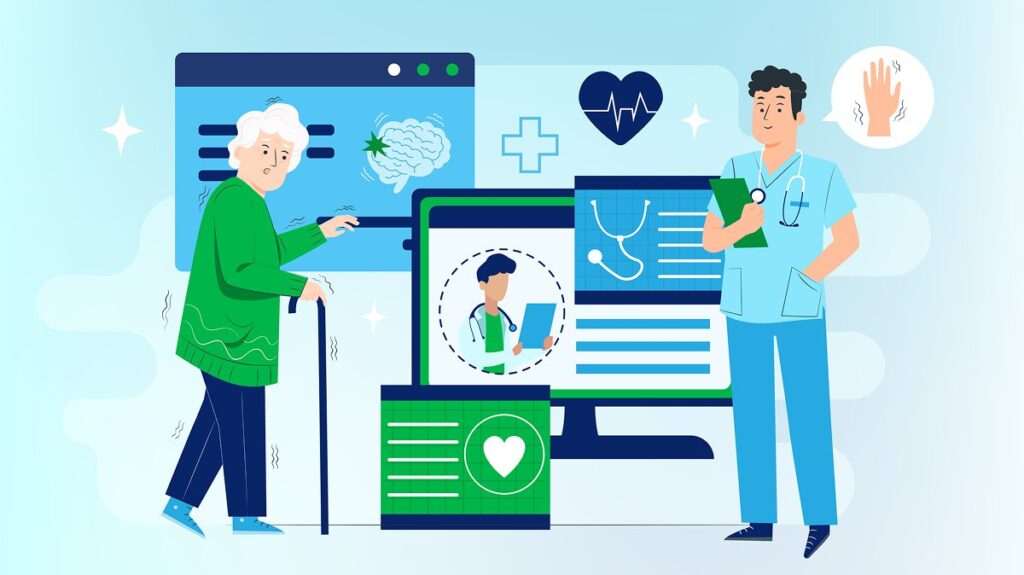
These solutions enhance patient independence, reducing the need for frequent hospital visits while ensuring that treatment remains aligned with symptom progression.
7. Connected Inhalers
For individuals with asthma and chronic obstructive pulmonary disease (COPD), attacks can occur suddenly and without warning. Inhalers are the primary treatment, but patients often forget to carry them or misuse them.
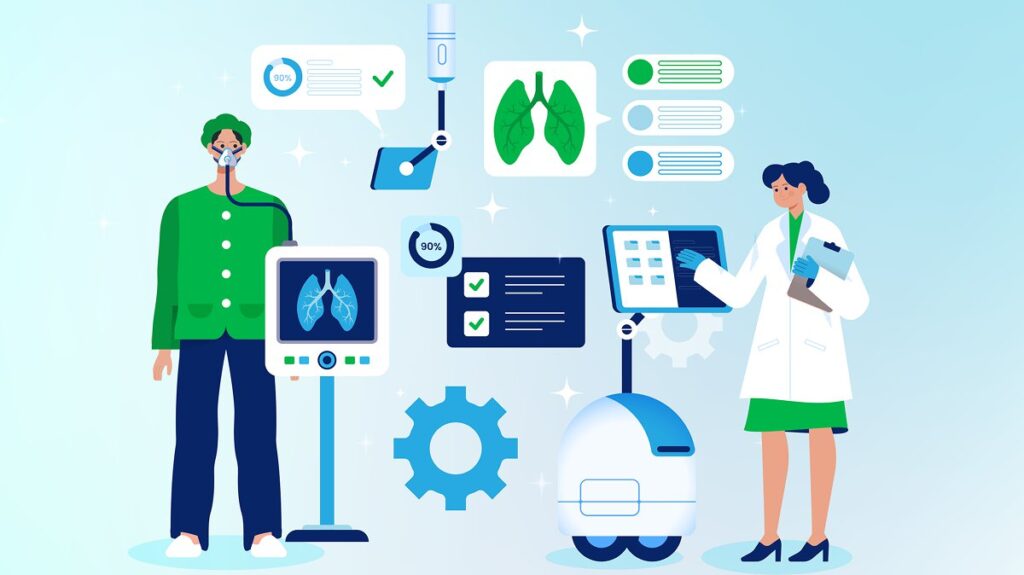
Connected inhalers solve these issues by tracking usage patterns and reminding patients when to take their medication. Sensors embedded in the inhaler monitor how frequently and correctly the device is used. If a patient forgets a dose, a smartphone notification provides a reminder.
Some inhalers also analyze environmental factors such as air quality, humidity, and allergens, helping patients understand potential triggers for respiratory attacks. These insights lead to better disease management and fewer emergency hospital visits.
8. Ingestible Sensors
Traditional methods for diagnosing gastrointestinal issues involve invasive procedures like endoscopy, which can be uncomfortable for patients. IoT-enabled ingestible sensors provide a less intrusive alternative by offering real-time insights into the digestive system.
These pill-sized sensors travel through the gastrointestinal tract, collecting data on pH levels, temperature, and potential signs of bleeding or inflammation. The information is transmitted wirelessly to healthcare providers, enabling early detection of conditions such as ulcers, Crohn’s disease, and internal bleeding.
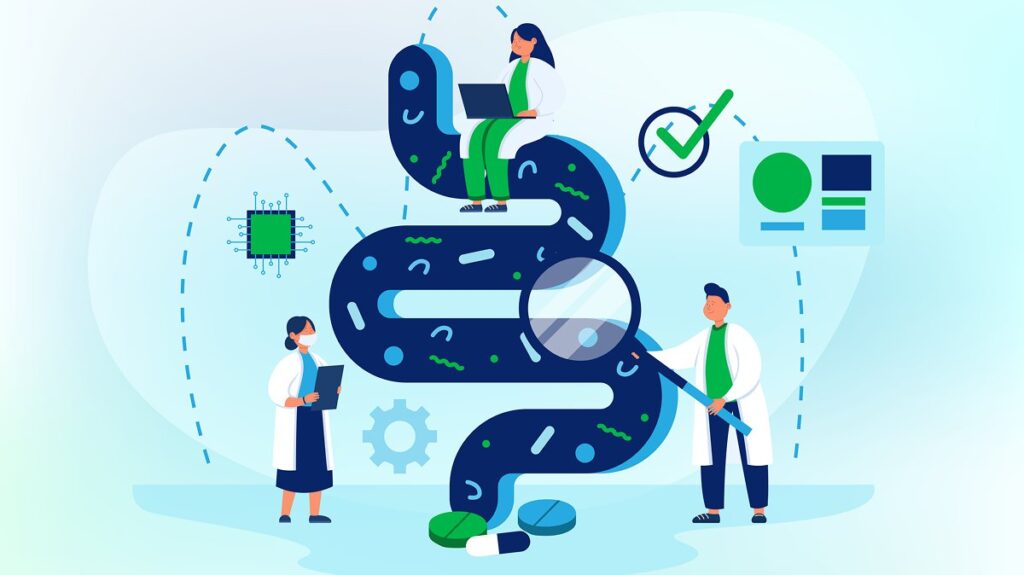
Because these sensors pass through the body naturally, they offer a safer and more convenient option for patients and doctors. Research is ongoing to enhance battery life and develop biodegradable versions for even greater usability.
9. Connected Contact Lenses
Smart contact lenses represent a breakthrough in passive health monitoring. These lenses are embedded with micro-sensors that continuously measure indicators such as glucose levels in tears, making them especially beneficial for diabetic patients.
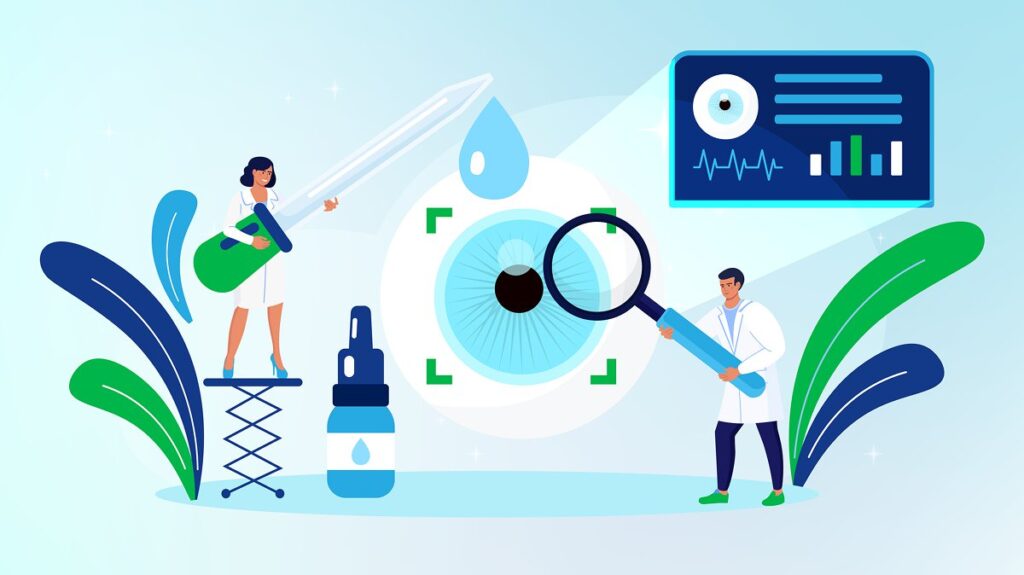
Some advanced versions feature tiny cameras that capture images, enabling the early detection of glaucoma and other eye diseases. Additionally, augmented reality (AR) features have potential surgical applications, such as vision enhancement.
Connected contact lenses have the potential to revolutionize ophthalmology and broader healthcare diagnostics by integrating seamless data collection into patients’ daily routines.
10. Robotic Surgery
Minimally invasive surgical techniques have improved patient recovery but require high precision and control. IoT-powered robotic surgical systems enable greater accuracy by allowing surgeons to perform delicate procedures with enhanced stability.

Robotic-assisted surgeries involve internet-connected instruments that provide real-time feedback to surgeons, helping them navigate complex procedures. These systems reduce the size of incisions needed, leading to faster healing, lower risk of infection, and reduced hospital stays.
As machine learning and AI integration continue to advance, robotic surgery will become even more precise, expanding its applications to more specialized medical fields such as neurosurgery and microsurgery.
Things to Consider When Implementing the Internet of Things in Medical
Implementing the Internet of Things in Medical within healthcare settings offers numerous benefits, but it also presents several challenges that organizations must address to ensure successful integration. The primary considerations are interoperability issues, regulatory compliance, and the need for a skilled workforce.
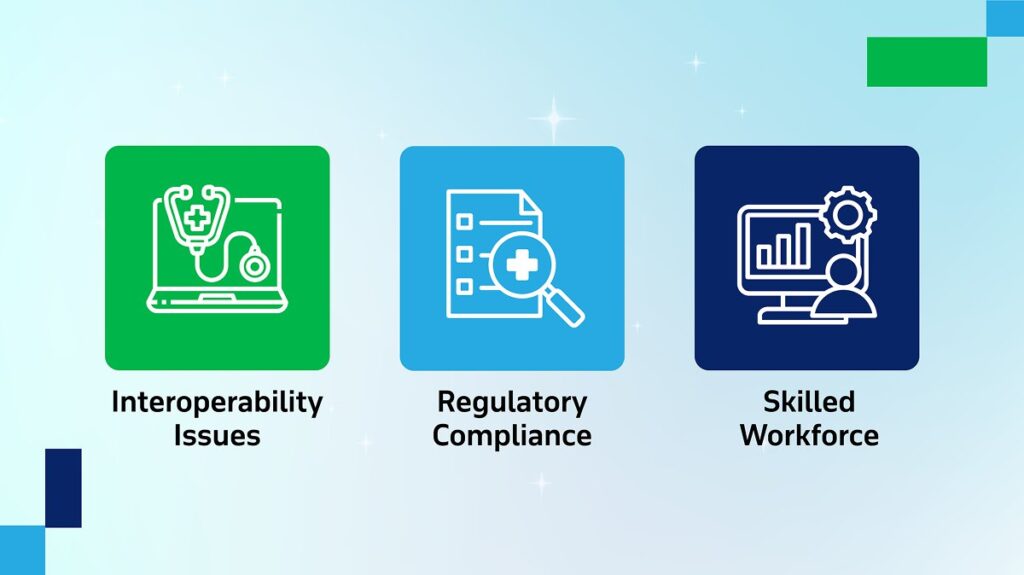
1. Interoperability Issues
Interoperability is a significant hurdle when implementing the Internet of Things in Medical, mainly due to the diverse range of devices and systems involved. Each device may use different communication protocols, data formats, and standards, leading to difficulties in seamless data exchange. This heterogeneity can result in data silos, impeding the comprehensive analysis necessary for informed clinical decisions.
To address these challenges, adopting universal standards such as ISO/IEEE 11073 can facilitate real-time, plug-and-play interoperability for medical devices. These standards define consistent communication protocols and data representations, enabling devices from various manufacturers to work together cohesively. Additionally, implementing frameworks like FHIR (Fast Healthcare Interoperability Resources) supports standardized data exchange, promoting integration across different healthcare systems. Collaborative efforts among device manufacturers, healthcare providers, and regulatory bodies are essential to develop and enforce these interoperability standards, ensuring a cohesive Internet of Things in Medical ecosystems.
2. Regulatory Compliance
Navigating the complex regulatory compliance landscape is crucial when implementing the Internet of Things in Medical solutions. Healthcare applications and devices must adhere to stringent regulations to ensure patient safety, data privacy, and overall efficacy. In the United States, the FDA (Food and Drug Administration) provides guidelines for Software as a Medical Device (SaMD), emphasizing the importance of software validation, cybersecurity measures, and ongoing monitoring. Non-compliance can lead to legal repercussions, financial penalties, and compromised patient trust.
Organizations should integrate regulatory considerations into the early stages of their Internet of Things in Medical development to achieve compliance. This involves conducting thorough risk assessments, implementing robust data encryption, and establishing processes for continuous software updates to address emerging vulnerabilities. Engaging with regulatory experts and utilizing compliance frameworks can help organizations navigate the regulatory environment effectively, ensuring that the Internet of Things in Medical devices meets all necessary legal and safety standards.
3. Skilled Workforce
Successful deployment and management of the Internet of Things in Medical technologies require a workforce proficient in healthcare practices and advanced technologies. This includes software development, data analytics, cybersecurity, and medical regulations expertise. The convergence of healthcare and technology necessitates professionals who can bridge the gap between clinical needs and technical solutions.
Addressing this need involves investing in specialized training programs that equip healthcare IT professionals with the necessary skills to manage and innovate within the Internet of Things in Medical ecosystems. Collaborations with educational institutions to develop curricula focused on healthcare technology can cultivate a pipeline of skilled workers. Additionally, fostering a culture of continuous learning within organizations encourages staff to stay abreast of evolving technologies and regulatory changes, ensuring that the workforce remains competent in handling the complexities of the Internet of Things in Medical implementations.
Successfully integrating the Internet of Things in Medical into healthcare environments requires deep expertise in interoperability, compliance, and technical execution. KMS Healthcare specializes in advising, designing, and implementing IoT solutions that align with industry standards and regulatory requirements. With a focus on seamless system integration and data security, our team ensures that healthcare organizations can harness the full potential of the Internet of Things in Medical while maintaining efficiency, safety, and compliance. Whether it’s optimizing connected devices, streamlining data exchange, or enhancing patient monitoring, KMS Healthcare delivers solutions tailored to the evolving needs of the healthcare industry.
Unleash the Power of IoT in Medical with KMS Healthcare
Implementing IoT in healthcare requires deep industry expertise, seamless integration, and strict regulatory compliance. KMS Healthcare specializes in custom IoT solutions that enhance patient monitoring, optimize healthcare workflows, and ensure secure, real-time data exchange.
- Custom IoT Medical Solutions: Develop smart devices and applications for remote patient monitoring, real-time health data collection, and enhanced clinical decision-making.
- Regulatory Compliance & Security: Ensure HIPAA-compliant data handling, encrypted communication, and robust cybersecurity to protect sensitive patient information.
- Seamless System Integration: Connect IoT-enabled devices with EHR systems, cloud platforms, and healthcare networks to improve operational efficiency and data accuracy.
Want to transform healthcare with IoT? Partner with KMS Healthcare to build secure, scalable, fully integrated solutions.
